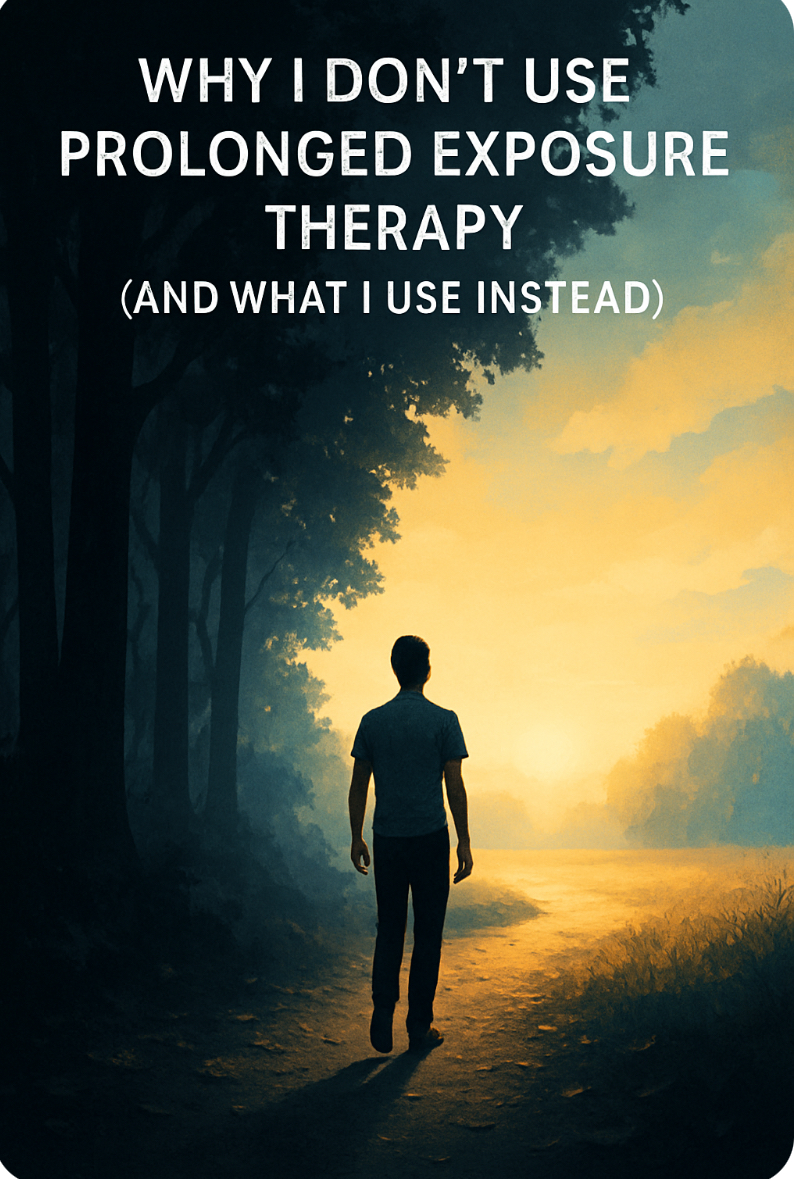This is an 8-minute “Deep Dive Podcast”:
As a therapist, our choices about treatment methods are often shaped not only by training and research, but by something deeper: lived experience and ethical grounding. I want to share two key reasons why I personally do not use Prolonged Exposure Therapy (PE)—also known as flooding—in my trauma work, and why I’ve instead chosen to work with Reconsolidation of Traumatic Memories (RTM).
1. A Personal History with Flooding
In 1972, I spent three sessions in a therapist’s office being guided to repeatedly relive a horrific airplane crash—the one that had killed the three pilots I’d flown with just the day before. The intent was to “desensitize” me to the trauma. The outcome? It didn’t bring healing. It left me overwhelmed.
That experience has never left me. It’s not just that PE didn’t work for me—it’s that it added more emotional turbulence to an already devastating memory. And I’m not alone. Many clients I’ve spoken with have echoed similar feelings: that exposure-based approaches felt invasive, re-traumatizing, or simply ineffective for their needs.
So, when I began working with trauma professionally, I carried a deep bias against flooding. But this bias isn’t theoretical—it’s experiential. I know what it feels like to be on the receiving end of an approach that values protocol over person. That matters.
2. Ethics and Efficiency: Therapy Is Not a Meal Ticket
The second reason I avoid PE is rooted in ethics and economics. I never had to rely on therapy to feed my family. My career in air traffic control provided for us well, and as a result, I never approached therapy from a mindset of financial dependency. That freedom came with a deep responsibility: never to draw out a session, never to “stretch” a client’s process for the sake of income.
That’s where RTM fits so well. It’s brief (less than 4 sessions). It’s effective. It honors the client’s story without forcing them to re-live it. It facilitates healing without prolonged suffering.
A Call For A More Compassionate Therapy
I’m not here to criticize Prolonged Exposure (PE) as inherently harmful. I know that some clinicians use it with great care, skill, and integrity. However, even under the best conditions, PE typically requires clients to repeatedly relive their traumatic experiences—often more than eight times—before any meaningful progress is observed. For many, this process isn’t just difficult; it can be emotionally exhausting or even re-traumatizing. I’ve listened to clients who described feeling more fragmented after undergoing PE than before they started. It’s also important to acknowledge that PE has one of the highest dropout rates among trauma-focused therapies—a clear indication that, for many, the process is simply too overwhelming to complete.
The dropout rate for PE is 25-40%, depending on what study you read and RTM is 0-5%.
As therapists, I believe we have a duty to seek out methods that reduce suffering, not extend it unnecessarily. RTM has proven to be that method for me—a gentle, structured, and a way to help clients heal without retraumatization.
If you’ve never experienced trauma therapy from the client chair, I urge you to listen to those who have. Our methods should be shaped as much by compassion and humility as by research and certification.
https://clintmatheny.com/how-i-cured-my-ptsd/
Healing doesn’t have to hurt. And therapy doesn’t have to be long to be effective.
Want to Learn More About RTM?
If you’re interested a trauma protocols that are brief, precise, and profoundly respectful of the client’s nervous system, I encourage you to explore RTM and other modalities that use memory reconsolidation.
https://clintmatheny.com/rtm-1/
https://clintmatheny.com/breaking-my-chains-four-decades-of-triumph-over-ptsd-with-rtm/
These sites provide RTM trainings both in person and online:
https://thertmprotocol.com/calendar
Let’s change what trauma therapy can look like.
Clint77090@gmail.com

